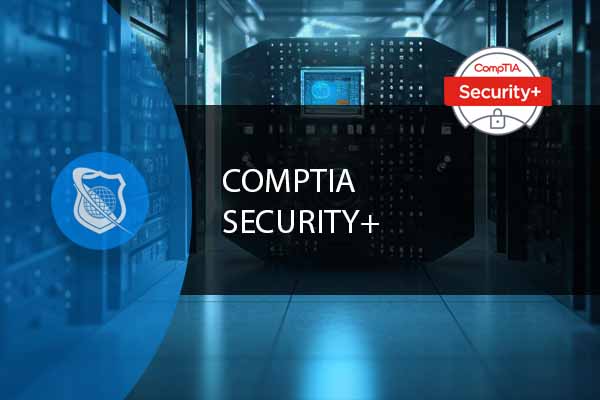Introduction to IPsec
In today’s digital era, securing internet communication has become paramount for businesses and individuals alike. Enter IPsec (Internet Protocol Security), a suite of protocols that safeguards internet communications by authenticating and encrypting each IP packet of a session. The importance of IPsec cannot be overstated—it ensures the confidentiality, integrity, and authenticity of data exchanges across the insecure expanse of the internet, making it a cornerstone of modern cybersecurity.
How IPsec Works
At the heart of IPsec are two main components: the Authentication Header (AH) and the Encapsulating Security Payload (ESP). AH is responsible for providing connectionless integrity and authenticating data origin for IP packets, ensuring that the data has not been tampered with in transit. On the other hand, ESP focuses on encrypting the data to maintain confidentiality, alongside offering integrity and authentication.
IPsec operates in two modes: Transport and Tunnel. Transport mode encrypts only the payload of an IP packet, ideal for end-to-end communication between devices. Tunnel mode, however, encrypts the entire IP packet, used in site-to-site VPNs, encapsulating the original packet in a new IP packet with a new IP header.
Setting Up IPsec
A critical aspect of setting up IPsec is the Internet Key Exchange (IKE) process, which establishes a shared secret key to secure communications between two parties. Additionally, Security Associations (SAs) are set up to manage the encryption keys and negotiate the security protocols, laying the groundwork for a secure IPsec connection.
elving deeper into the setup process of IPsec, it’s crucial to understand the mechanics behind establishing a secure and reliable IPsec connection. This involves several key steps and components, including the Internet Key Exchange (IKE), Security Associations (SAs), and the configuration of IPsec policies. Let’s explore each of these in more detail:
Secure Your Networks and Prevent Password Breaches
Our robust CompTIA Sec+ course is the perfect resouce to ensure your company’s most valuable assets are safe. Up your security skills with this comprehensive course at an exceptional price.
Internet Key Exchange (IKE)
IKE is pivotal in the IPsec setup process, facilitating the negotiation of security protocols and encryption methods between two endpoints. IKE operates in two phases:
- Phase 1: Establishes a secure channel between the two parties for negotiating Phase 2. This phase focuses on authenticating the two endpoints to each other and establishing a secure, encrypted channel by negotiating encryption and authentication methods, as well as the keys to use. A common real-world example is when a remote worker connects to the company’s network; the worker’s device and the company’s VPN gateway authenticate each other in this phase.
- Phase 2: Uses the secure channel established in Phase 1 to negotiate the IPsec SAs that will be used to encrypt and authenticate the actual IP packets. This phase involves agreeing on the specific IPsec protocols (AH or ESP), encryption algorithms, and the key exchange method to be used for the session.
Security Associations (SAs)
An SA is a set of policies that define the parameters of the IPsec connection. Each SA includes details like the encryption algorithm (e.g., AES), authentication method (e.g., SHA-256), and the keys used for encryption and authentication. IPsec requires an SA in each direction (inbound and outbound), forming a pair that governs the security of a bidirectional communication.
In practice, setting up SAs involves configuring each endpoint with the policies that will dictate how the IPsec tunnel operates. For instance, when establishing a site-to-site VPN between two offices, the network administrators at both sites agree on the encryption and authentication methods, and then configure their respective VPN devices accordingly.
Configuration of IPsec Policies
Configuring IPsec policies is the final step, where the rules governing the traffic that should be secured by IPsec are defined. This includes specifying which traffic types (identified by source and destination IP addresses, ports, and protocols) should be encrypted and authenticated using IPsec. Policies also determine whether the traffic should be processed in transport or tunnel mode, depending on the use case.
For example, a policy might specify that all traffic from the finance department’s network to the company’s data center must be encrypted and authenticated, ensuring that sensitive financial data is securely transmitted over the internet.

Perpare for CompTIA Network+ Certification
Learn concrete vendor neutral Network fundamentals in our comprehensive CompTIA Network+ traning course.
Real-World Example: Setting Up a VPN
A practical application of setting up IPsec is in the creation of a VPN for a remote workforce. Consider a company that wants to allow its employees to access its internal network securely from remote locations. The setup process would involve:
- Choosing IKE and IPsec Parameters: The company selects the encryption and authentication methods (e.g., AES for encryption and SHA-256 for authentication) and the IKE version (IKEv1 or IKEv2) based on security requirements and compatibility with the VPN client software used by employees.
- Configuring VPN Gateways: The company configures its VPN gateway to accept connections from authorized users, establishing policies for the required security associations and specifying the IPsec policies that determine what traffic should be encrypted.
- Distributing VPN Client Configuration: Employees are provided with VPN client software configured with the necessary parameters to establish a secure connection to the company’s network. This includes setting up the client to use the agreed-upon encryption and authentication methods and connecting to the VPN gateway’s IP address.
- Ongoing Management and Troubleshooting: Once the VPN is operational, the company monitors the connection for any security issues, periodically updates encryption keys, and troubleshoots any connectivity problems that arise, ensuring that the remote workforce can securely access the internal network at all times.
By carefully setting up IPsec, organizations can secure their internet communications, protecting sensitive data from interception and unauthorized access, and enabling secure connectivity for a variety of applications, from remote access VPNs to site-to-site connections.
IPsec Applications
One of the most common applications of IPsec is in the creation of Virtual Private Networks (VPNs), allowing remote users and branch offices to securely connect to a central corporate network over the internet. For example, a company with offices in New York and London can use IPsec to create a secure, encrypted tunnel for transmitting sensitive data between these locations.
IPsec also plays a crucial role in securing remote access and facilitating secure site-to-site connectivity, ensuring that businesses can operate safely across the globe, regardless of the threats lurking on the internet.

Information Security Manager Career Path
Propel your career forward and be part of an essential member of any management team as an Information Security Manager. This advanced training series is designed specifically for those want to move up into a management position in the IT field.
Challenges and Solutions
Despite its robustness, IPsec deployment can encounter challenges such as interoperability issues and the complexities of managing configurations across diverse environments. A common hurdle is NAT traversal, which IPsec addresses through techniques like IPsec NAT-Traversal (NAT-T), allowing IPsec traffic to pass through NAT devices without issue.
Troubleshooting Common Issues
- Connectivity Problems: Ensure that all IPsec policies and SAs match on both ends of the connection. Mismatches in configurations are common reasons for failed connections.
- Performance Issues: Encryption can introduce latency. Consider adjusting the encryption algorithms or reducing the encryption strength for less sensitive data to improve performance.
Challenges and Solutions
Setting up and managing IPsec can present several challenges, from configuration complexities to performance concerns. Here are common challenges and their solutions:
Challenge: Compatibility and Interoperability Issues
Solution: Stick to widely supported standards and encryption algorithms. Test configurations thoroughly when connecting devices from different vendors.
Challenge: Complex Configuration Management
Solution: Use centralized management tools for IPsec configurations to simplify the setup and maintenance of IPsec policies and SAs across the network.
Challenge: Performance Impact
Solution: Optimize encryption settings and consider hardware that supports encryption offloading to minimize the performance overhead of IPsec.
Challenge: NAT Traversal Issues
Solution: Implement IPsec NAT-Traversal (NAT-T) to enable IPsec traffic to pass through NAT devices by encapsulating IPsec packets in UDP.
Challenge: Key Management Difficulties
Solution: Automate the key exchange and renewal process using IKE to reduce the administrative burden of manual key management.
Challenge: Security Policy Configuration Errors
Solution: Regularly review and audit IPsec policies to ensure they correctly reflect the intended security requirements. Use simulation tools to test the impact of policy changes in a controlled environment.
By addressing these challenges with careful planning and the right solutions, organizations can leverage IPsec to secure their network communications effectively, ensuring confidentiality, integrity, and authenticity of data in transit.
The Future of IPsec
As cyber threats evolve, so too does IPsec, with ongoing developments aimed at enhancing its security capabilities and efficiency. Technological advancements continue to shape IPsec, ensuring it remains a vital tool for securing internet communications against an ever-changing threat landscape.
Conclusion
IPsec stands as a pillar of internet security, providing the means to secure communications across unsecured networks. Its importance in the digital age cannot be overstated, offering a reliable method for ensuring the confidentiality, integrity, and authenticity of data. Businesses and individuals are encouraged to adopt IPsec, leveraging its capabilities to protect their digital communications and data.
Key Term Knowledge Base: Key Terms Related to IPsec Deployment and Troubleshooting
Understanding key terms related to IPsec (Internet Protocol Security) is crucial for professionals involved in securing digital communications. IPsec is a suite of protocols designed to secure Internet communications by encrypting and authenticating each IP packet of a communication session. It plays a vital role in creating secure networks, especially for VPNs, by ensuring the confidentiality, integrity, and authenticity of data exchanges over the Internet. Here are essential terms and concepts that are fundamental to working with IPsec:
| Term | Definition |
|---|---|
| IPsec | A suite of protocols for securing Internet Protocol (IP) communications by authenticating and encrypting each IP packet of a communication session. |
| Authentication Header (AH) | A component of IPsec that provides connectionless integrity and data origin authentication for IP packets. |
| Encapsulating Security Payload (ESP) | A component of IPsec that provides confidentiality, along with optional integrity and authentication. |
| Transport Mode | An IPsec mode that encrypts only the payload of an IP packet, ideal for end-to-end communication between devices. |
| Tunnel Mode | An IPsec mode that encrypts the entire IP packet, used in site-to-site VPNs, by encapsulating the original packet in a new IP packet. |
| Internet Key Exchange (IKE) | A protocol used in IPsec for establishing a shared secret key and negotiating security associations (SAs) to secure communication between two parties. |
| Security Associations (SAs) | A set of policies and keys that define the parameters of an IPsec connection, including the encryption and authentication methods. |
| Phase 1 (IKE) | The first phase of the IKE process, focused on establishing a secure, encrypted channel for negotiating Phase 2. |
| Phase 2 (IKE) | The second phase of the IKE process, using the secure channel established in Phase 1 to negotiate the SAs for encrypting and authenticating IP packets. |
| NAT Traversal (NAT-T) | A technique that allows IPsec traffic to pass through Network Address Translation (NAT) devices by encapsulating IPsec packets in UDP. |
| VPN (Virtual Private Network) | A network that allows for the secure transmission of data over unsecured networks like the Internet by using encryption and other security mechanisms. |
| AES (Advanced Encryption Standard) | A symmetric encryption algorithm widely used in IPsec for ensuring data confidentiality. |
| SHA-256 (Secure Hash Algorithm 256) | A cryptographic hash function used in IPsec for integrity and authentication. |
| PKI (Public Key Infrastructure) | A system for the creation, storage, and distribution of digital certificates and public-key cryptography, ensuring secure electronic transfers of information. |
| Pre-shared Key | A secret key used in IPsec that is shared between two parties using a secure channel before it is used. |
| Digital Certificates | Electronic documents used to prove the ownership of a public key, part of PKI used in IPsec for authentication. |
| Encryption Algorithms | Mathematical formulas used to encrypt data, such as AES, DES, and RSA, ensuring the confidentiality of information transmitted over IPsec. |
| Integrity Check Value (ICV) | A checksum used in IPsec to ensure the integrity of data by detecting any alterations made during transmission. |
| Key Management | The process of managing cryptographic keys in a cryptosystem, including their generation, exchange, storage, use, and replacement. |
| IPsec Policies | Rules that determine how traffic should be secured using IPsec, specifying the conditions under which traffic will be encrypted and authenticated. |
| Site-to-Site VPN | A type of VPN setup that connects two or more networks, allowing secure communication between them over the Internet. |
| Remote Access VPN | A VPN setup that allows individual users to connect securely to a network from a remote location over the Internet. |
| ESP Header | A component of the ESP protocol in IPsec that precedes the payload, containing information necessary for decryption and authentication. |
| AH Header | A component of the AH protocol in IPsec that provides authentication and integrity for IP packets. |
| IPsec Gateway | A device or software that implements IPsec protocols for securing Internet communications, acting as a gateway for encrypted traffic. |
These terms form the foundation of understanding and working with IPsec, a critical technology in securing digital communications across networks.
Frequently Asked Questions Related to IPSec
What is IPsec and how does it work?
IPsec (Internet Protocol Security) is a suite of protocols designed to secure Internet communications by encrypting and authenticating IP packets. It operates at the IP layer, enabling secure communications over potentially unsecure networks like the Internet. IPsec uses two main protocols, Authentication Header (AH) for data integrity and authentication, and Encapsulating Security Payload (ESP) for encrypting data to ensure confidentiality. It can operate in two modes: Transport mode, which encrypts the payload of an IP packet, and Tunnel mode, which encrypts the entire IP packet.
When should I use IPsec?
IPsec is ideally used for:
Creating VPNs (Virtual Private Networks) to connect remote employees or branch offices securely to a central office over the Internet.
Securing data transmission between servers across unsecure networks.
Enhancing security for remote access to a network.
Any scenario where data in transit needs encryption and authentication to protect against eavesdropping, tampering, or unauthorized access.
What are the differences between Transport and Tunnel mode in IPsec?
Transport Mode: Only the payload (the data part) of the IP packet is encrypted and/or authenticated. This mode is typically used for end-to-end communication between two devices, such as secure communication between a client and a server.
Tunnel Mode: The entire IP packet (header and payload) is encrypted and/or authenticated and then encapsulated within a new IP packet. This mode is widely used in VPNs, where data from one network is securely transmitted to another network over the Internet.
How does IPsec handle key exchange?
IPsec uses the Internet Key Exchange (IKE) protocol to automate the negotiation of security associations (SAs) and the exchange of cryptographic keys. IKE operates in two phases:
Phase 1 establishes a secure channel between the two parties for the safe exchange of keys for IPsec.
Phase 2 uses the secure channel established in Phase 1 to negotiate the SAs that will actually encrypt and decrypt the data.
IKE supports the use of pre-shared keys, digital certificates, and public key infrastructure (PKI) for authentication during these phases.
What are the main challenges in implementing IPsec and how can they be addressed?
The main challenges include:
Complex Configuration: IPsec’s flexibility and security come with complex configuration options. Solution: Using simplified configuration tools or hiring experienced network security professionals can help.
Performance Overhead: Encryption and decryption processes consume resources. Solution: Optimize encryption settings and consider hardware acceleration.
Interoperability Issues: Different vendors may implement IPsec slightly differently. Solution: Stick to standard protocols and widely supported algorithms, and perform thorough testing.
NAT Traversal: Traditional IPsec does not work well with NAT. Solution: Use IPsec NAT-Traversal (NAT-T) to encapsulate IPsec packets in UDP.

























